Rorschach Test: Just Blots or Working Method?
The Rorschach test is one of the most famous techniques of psychoanalysis for ordinary man. Often in the culture of the so-called "blots" used more for its visual effect, they look cool and unusual, and we know little about their true purpose and the methodology in General. Personally, I always thought that there are in insane amount of these smudges, half of them have no sense and it is difficult to call method generally, not to mention the proven test. Let's try to understand how it works.

Why blots? How many? What for?
Hermann Rorschach was the eldest son of the unfortunate artist. Perhaps that is why he was interest in drawing since childhood, namely drawing from the ink spots (lexographic). As an adult, Herman have combined his talent, developed in childhood, with the acquired medical profession - psychiatry.
Even while studying at the University, Rorschach had a number of interesting experiments to test: he compared how artistically gifted children and usual children describe ink stains. Thanks to the analytical approach to studies Hermann found that the personality of each individual consists from introversion and extraversion qualities — i.e. the internal and external factors that motivate us. The style of drawing and perception of own and other people's drawings is a reflection of the psycho-portrait of the person.
Having an analytical mind Rorschach decided to conduct full-scale research. He developed an approach: demonstration of specific ink spots to the patient in a strict sequence, and entering his answers into a special table. Then by mathematical calculation displays the result according to the test, which is interprets by a specialist. Herman has tested 400 subjects and determined statistically 40 working blots. But, all the publishers refused to publish his scientific work because of the large number of drawings, it was very expensive. So It had to reduce the number of blots for test, first to 15 and then to 10 (most effective according to Rorschach).
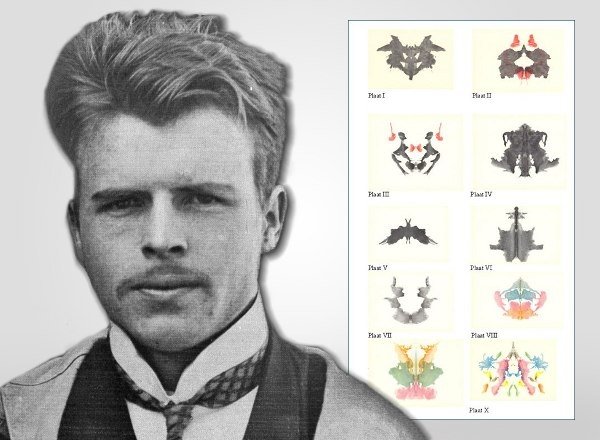
Each blot doesn't have clear forms and contrast, it is symmetric, the first blots mostly are plain, but gradually added color. The respondent have to say in free form what he sees on each card with a picture. It is important to observe the right sequence of cards. I'm not going to describe what each image that you see in the blur means, I'll describe what they should determine in man.
I
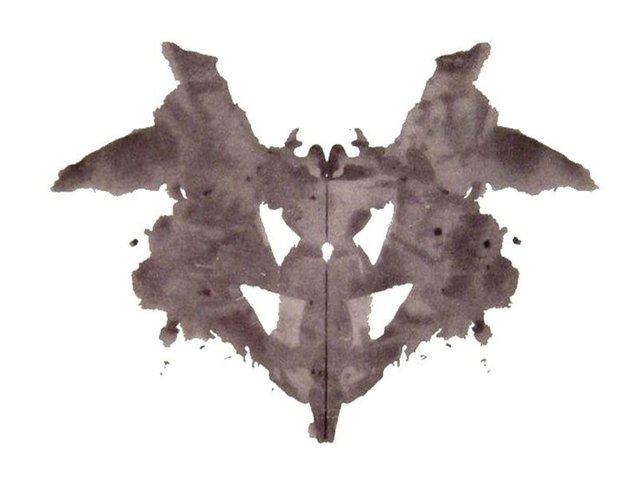
Spot of black ink. This is an introductory card, it determines how people cope with a stressful situation and allows you to configure it to work with the dough (the test itself is stress in some sense). The most popular answers: bat (negative), moth (negative- neutral), butterfly (positive).
II
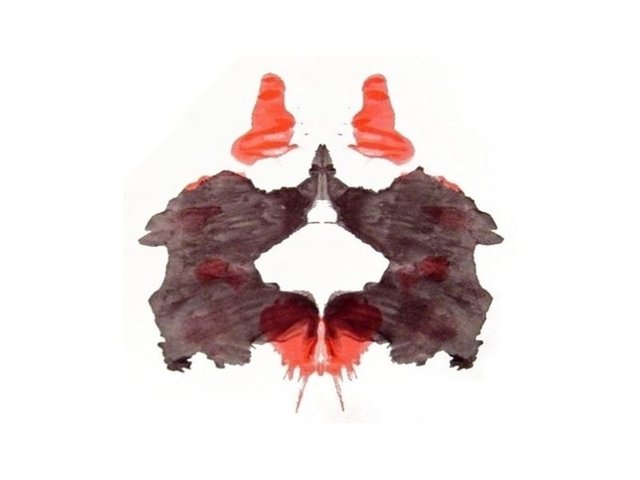
The slick black and red color. Red is often interpreted as blood. The card allows you to assess how a person manages his feelings of anger and aggression and how to cope with the physical damage. Identifying the major qualities of the person. The most frequent responses is some kind of animal (bear, dog). Two different creatures - the opposition to the opponent. One mirror creature - the similar reaction to the actions of others.
III
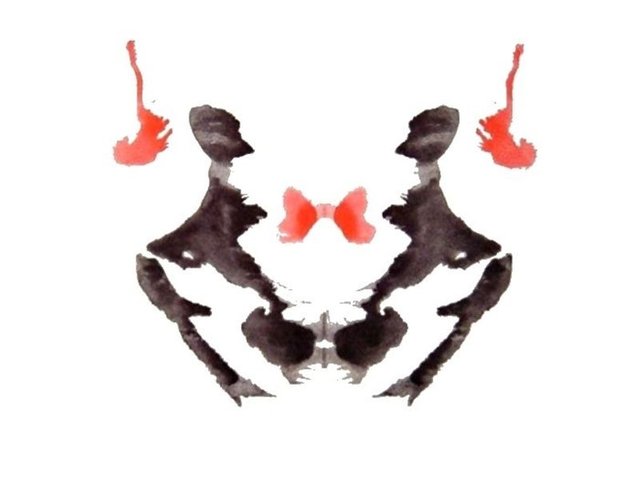
Black and red spot. The essence of the card to understand how a person relates to other people. Describing this blot, the patient essentially describes the model behavior with other people, that he uses more often - cooperation (when he sees two people), or self-absorbed (when he sees the reflection)
IV
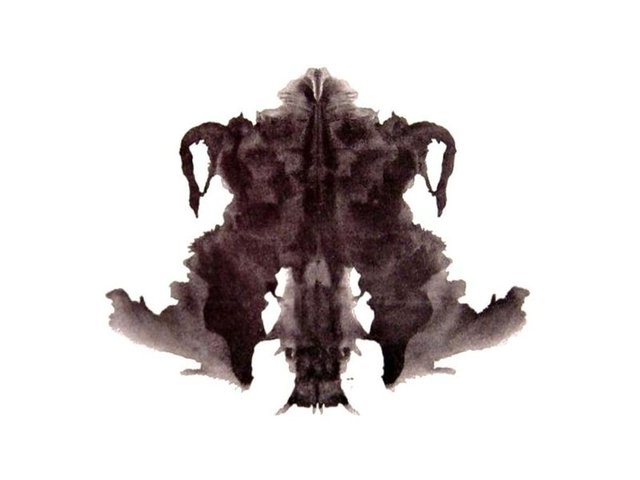
It is a kind of "shock card" after the previous, for many it carries threatening, something dark and sinister. It determines the reaction to the suppression of the individual, how the patient perceives the authorities. How a person is susceptible to pressure. Most likely to see the animal's skin, the carpet.
V
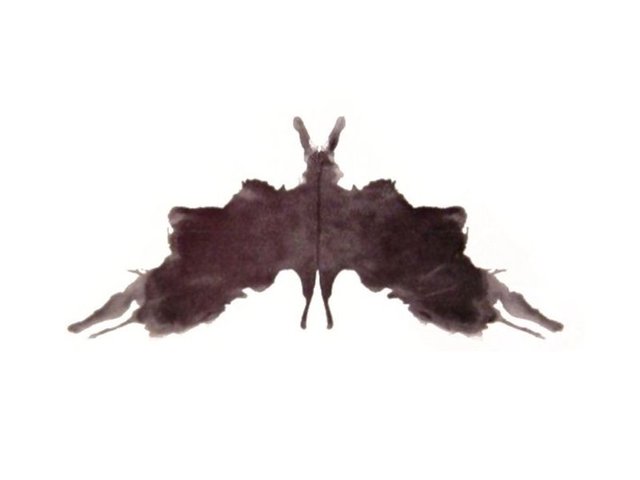
Black spot, but the meaning is completely opposite of the fourth. After the shock, on this card man doesn't feel any discomfort and threats and shows a more personal response, referring to his primary I. Responses are similar to the responses to the first card. If they differ, then 2.3 and 4 cards made a very strong impression on the psyche (we can already reveal the foundations of the problems). Popular answer: butterfly
VI
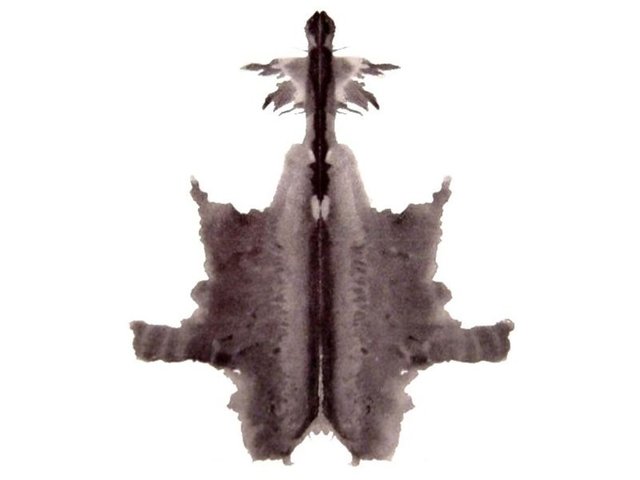
The picture on this card is also plain black; it is distinguished by the texture of the spots. This image makes the person association between interpersonal closeness, so it is called the "sexy card". It allows you to understand how people are open to sexual relations.
VII
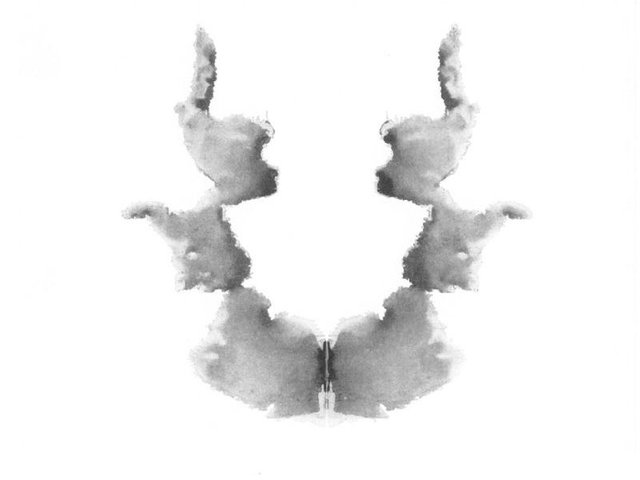
Grey ink stain. The parent card, she is associated with the feminine and with children. Allows you to identify the level of need of care of the self and about other people. Also determines the attitude towards the female sex in General. Frequent response: a human head and face.
VIII
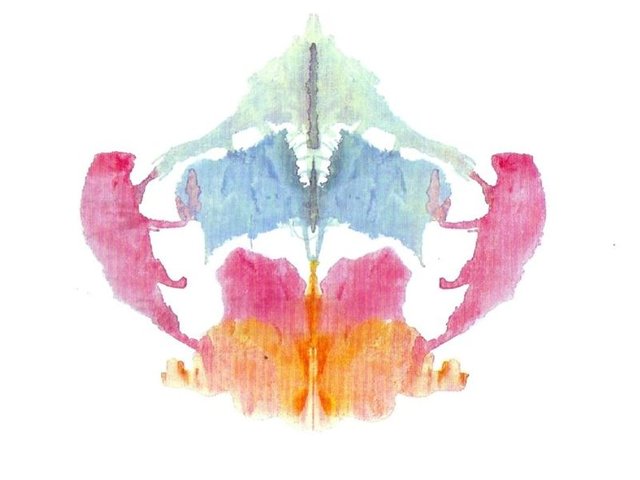
Color card (grey, pink, and orange, and blue). Because it is the first color card, it allows you to determine how people react to complex situation in their lives, how difficult for him to cope with it. Pondering long and complicated answer - it is a sign of difficulty in solving complex problems. The inability to respond to complex objects efficiently. Common answers: four legged animals.
IX
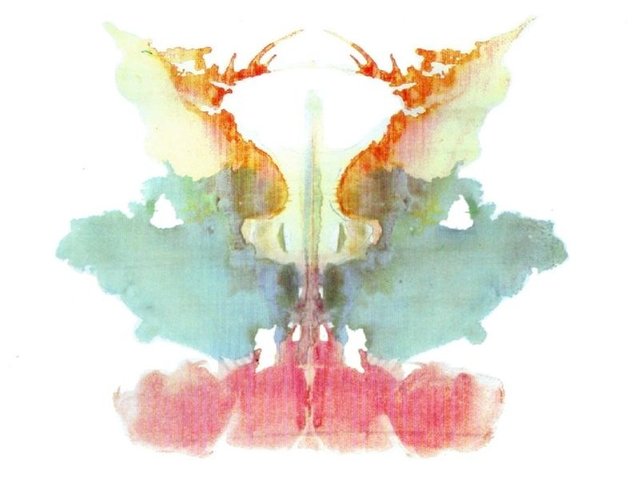
Blot is indeterminate shape, so it is difficult for most people to understand what is resembles this image. For this reason, this card allows you to evaluate how well people cope with the lack of a clear structure and uncertainty. How well person copes with the lack of organization of time and information. Almost no one can answer something specific about the image.
X
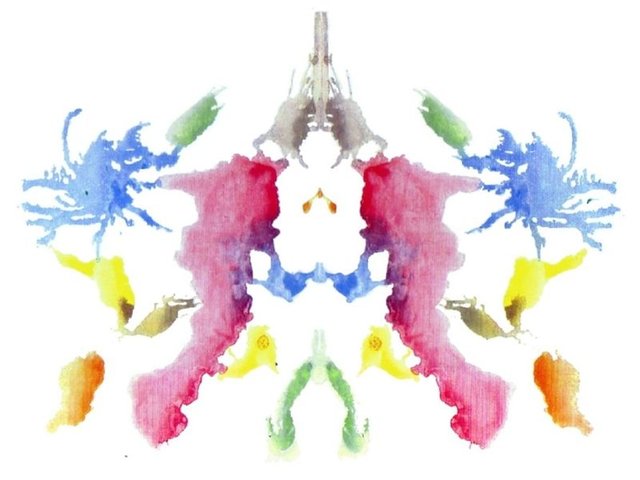
This card have the biggest set of colors. Many people experience quite pleasant feelings at the sight of this card. Being the last one, it can provide an opportunity for the subject to "splash", telling what they feel in different situations, or that they would like to experience. It allows you to reveal the hidden desires and motives. Popular answers: crab, lobster, spider, rabbit.
Evaluation of responses
The answers for each of the cards are not considered separately, as it was stated they are entered in the General table and then on a mathematical formula reveals the total psihoportret personality. In the evaluation it is important how the person perceives the blots:
- The integrity of the blot - man snatches only some fragments or sees the blot as a whole. It is an indicator of the desire for the integrity and integration of incoming data.
- Detail - the more details the person sees, the higher the degree of the narrowness of his focus, he does not able to see the big picture.
- Form - If the person identifies a large number of forms, i.e. defines the boundaries of blobs in its description, so his thoughts are dominate by feelings.
- Movement - the more moving objects the person sees, the higher his flexibility associative process. This is a sign of self-associative operation and high spiritual development.
- The difference of colors - the more colors and shades the person determines, the more he captured emotions and feelings. The symptom of "narrowed consciousness", impulsivity and lack of control.
Also included creatures and objects that people see, they are divided into the following categories:
- Animals (birds, fish, insects, mammals)
- The human figure and all that relates to man as a characteristic (age, gender, profession)
- Items. Mention of items for any purpose, size, properties, material.
- Fantastic images, fantastic creatures, etc. (witch, warlock, other worlds).
Indicators of "norm", i.e. balanced, Mature and complete person without serious internal problems are the following people with the next % of 10 pictures:
In 65-70% of the blots is perceived as a whole and not detailed. In 75-80% of the blobs have a clear form-border. Not more than 60% of the Association are in motion. 30-35%- animals, 25%- people, 1-2 items of the 10 cards and no more than 2-3 fantastic images.
[My Opinion]
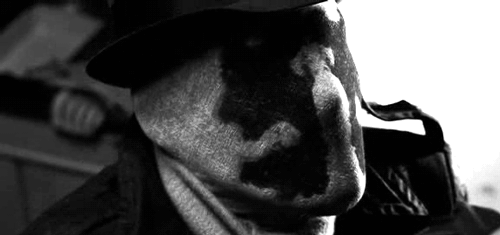
I, as an engineer, can't call psychology a science, because it has not fundamental, immutable data, no clear rules and immutable laws, as in physics and mathematics. For example: any object on our planet, which is heavier than air, are at rest will fall down because gravity is a rule, it is an indisputable law, it is proved theoretically and practically.
There is no unambiguous answers In psychology. In any so-called "rule" there is always an exception, what is unacceptable in the exact Sciences. And this exception will not be an anomaly, it will be called "special case". In my opinion, psychology is solely the area of accumulation of statistical data, all theories and hypotheses are based on results that have a greater % ( which is never equal to 100, or even 90/80). All the research results and their interpretation are very subjective. Some of these statistics remain unchanged for a long time - as a basic reaction to certain factors (fear), some data change each generation depending on the change of social conditions and culture.
But, importantly, due to the statistics, the results of psychology are applicable in real life. They cannot be projected on a separate entity (individuality), it is impossible to determine is the person crazy or a genius with unconventional thinking, if he misses the test results. But these data are working on a multitude, it is efficiently used in different spheres of our life. @natord

sources for article and images: Rorschach test, Hermann Rorschach, The technique of ink stains, Transcript of Rorschach test, How to interpret your rorschach, Rorschach cards.
Do not forget: